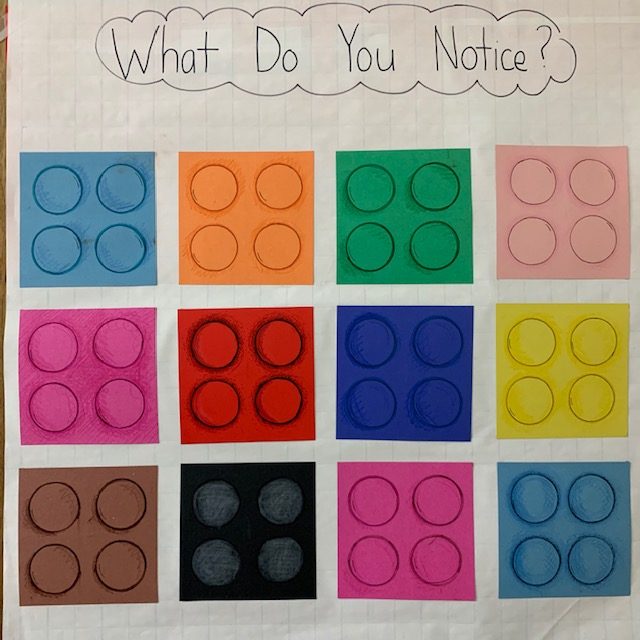
Skills:
K-2: counting, subitizing, geometric shapes
3-5: skip counting, repeated addition, multiplication, beginning algebra
Although there are no numbers represented, this What Do You Notice? poster is filled with number concepts. Young students should be able to quickly recognize that there are 4 circles on each square (subitizing). From there, they can decide how they want to count circles. Maybe they want to count just the circles on the pink squares or blue squares. Or maybe they want to count all the circles to arrive at the total number. Others may notice the squares and decide to count how many squares there are all together.
Older students can use repeated addition to determine the total number of squares (4 + 4 + 4 or 3 + 3 + 3 + 3) or they can multiply 3 x 4 or 4 x 3.
There are a variety of ways these students can determine the total number of circles: skip counting by fours; determining the total number of circles in a row and multiplying that by 3; multiplying the total number of squares by 4, multiplying 6 circles x 8 circles, etc.
Read More Read More


